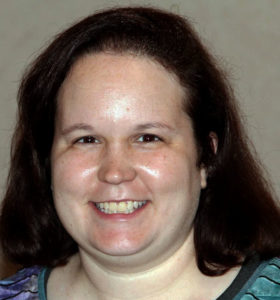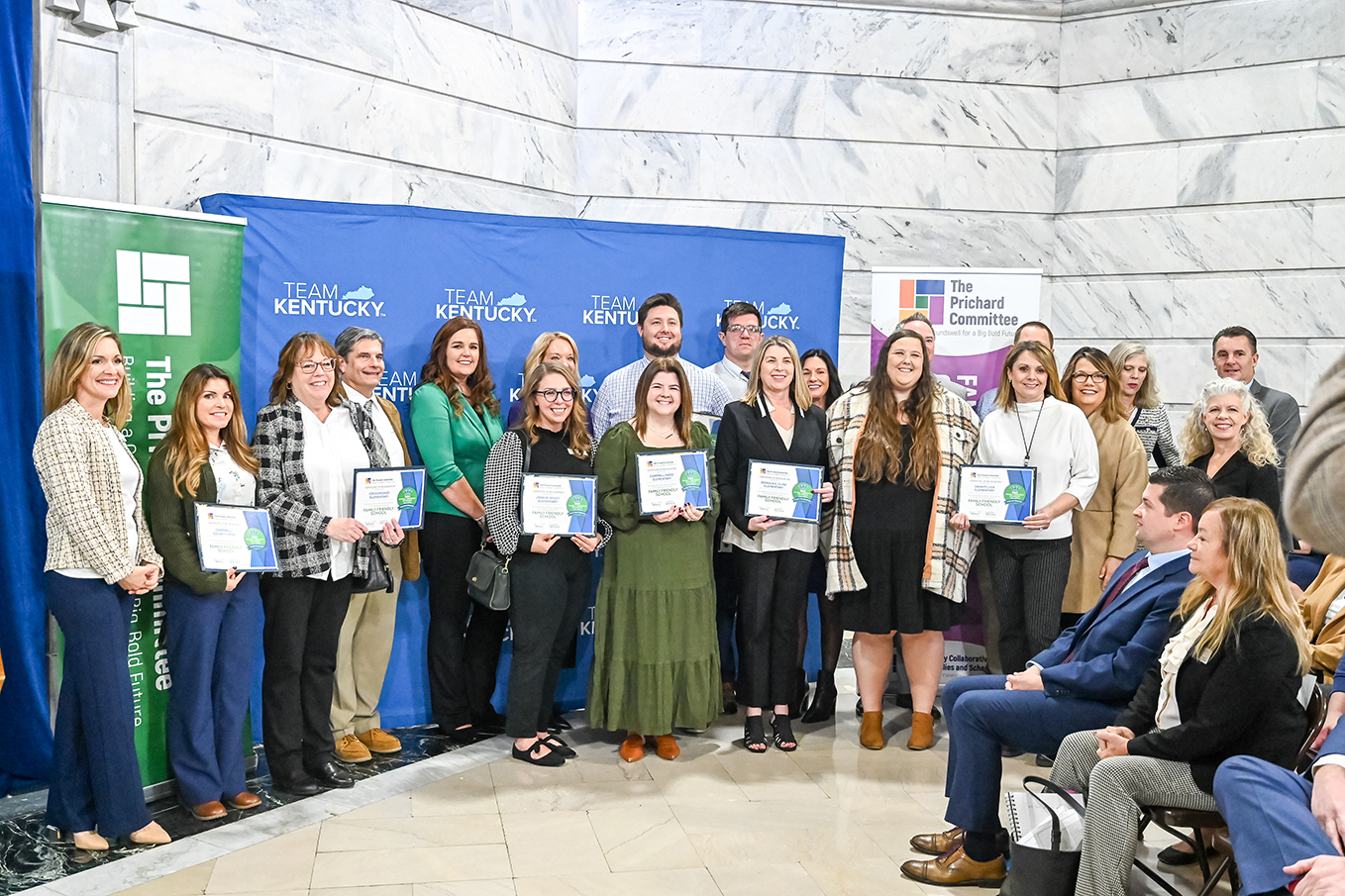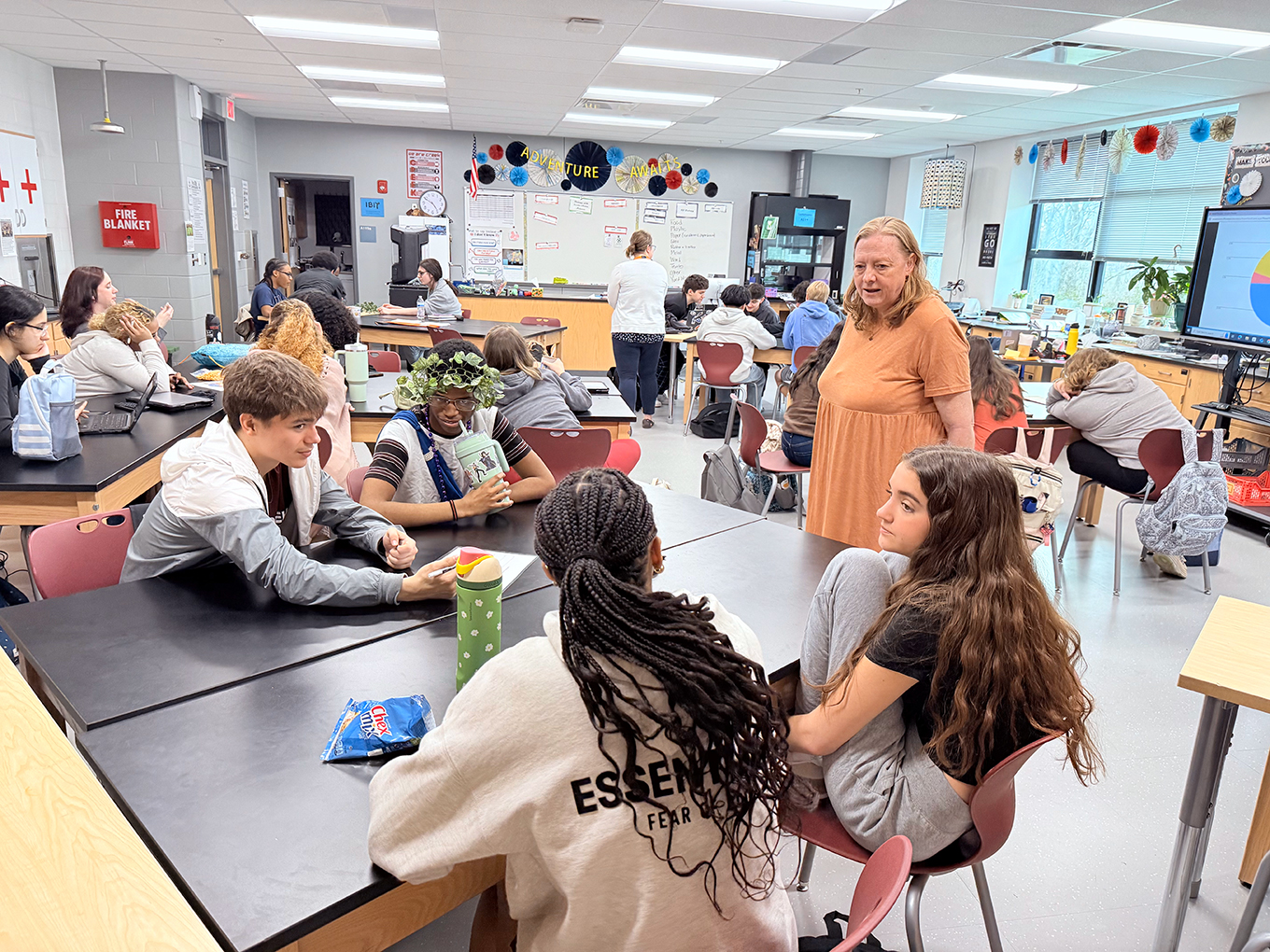
Julia Bishop
By Julia Bishop
julia.bishop@lee.kyschools.us
As a teacher of students with severe disabilities, I sometimes feel as though the students I work with are solely my responsibility. I want to shelter and protect them.
As their teacher, I want to build a safe environment within the walls of my classroom. My instructional assistants and I carefully craft experiences that build both academic and social skills. We design collaborative work that ensures students interact daily with each other to solve problems and build peer relationships. It gives me great joy when students express their excitement about what we are learning or say that they love coming to my classroom.
However, the longer I work with students, the more I realize I cannot and should not attempt to constantly protect them from the world outside my door. I want students to feel a sense of belonging in my classroom, but students with disabilities also need to feel as though they belong to the larger school community. My students’ education can only be enriched when they are recognized and valued by their teachers, their peers and the community beyond our school.
Inclusion is the key to creating a true sense of belonging in a community of learners.
To better understand what inclusion is, it is important to first discuss what it is not. Inclusion is not simply bringing students with special needs into a general education classroom, only to group them together in the back of the room while a special education instructor hovers nearby. Yes, the students are in the classroom, but are they really contributing members of the class?
The road to inclusion of students with special needs in my district has been paved by the hard work and collaboration of both special and general education teachers who are willing to set aside traditional mindsets about educator roles and responsibilities and student participation. My colleagues significantly increase students’ feeling of belonging by creating classrooms that provide access, opportunities for participation and support for students with disabilities. These three characteristics have provided the building blocks needed to create a safe environment where students thrive and grow with their peers.
In order to experience a sense of belonging, all students need access to a challenging, rigorous curriculum.
Students and teachers must approach curriculum with a growth mindset. Do we truly know what students are capable of if we never allow them to try? And if not successful the first time, what changes can we make to ensure greater student success? Teachers focusing on inclusion must learn to modify the grade-level curriculum rather than simply exchanging it with lower level expectations and busy work.
A 6th- and 7th-grade science teacher told me that in her classroom, all students are held to the same high standards. Students with special needs in her classroom may work with a peer buddy or complete an assignment electronically using an augmented communication system. Students in her classroom know that she will only accept their best effort, but that she will do all she can to help them get there. Her hard work pays off because not only are all students achieving at high rates, but students also are always so excited to go back to her class.
Participation with peers also can do wonders for increasing a sense of student belonging.
Students with special needs must be considered valuable, contributing members of the school community. Period. They need to be active contributors to discussions and projects. Opportunities for participation both socially and academically must occur. As teachers, we must model our expectations for all students. It is our job to make each student feel welcome in our classroom.
Our high school agriculture teacher is a model of how to increase participation of all students, even those who may be difficult to reach through traditional means. He greets every student with a smile as they enter his classroom and adjusts his questions and wait time so that each student has the opportunity to participate in his or her own way. Encouraging such active participation may require creative thinking on the part of the educator.
For many students with special needs to achieve success in the classroom, they may need a greater support network than their peers.
Teachers will have to stretch their comfort zone as they welcome special educators, instructional assistants and other support staff into their rooms. The introduction of more adults into the classroom has the potential to make or break the sense of community in the eyes of other students.
In order for all students, including students with disabilities, to feel as valued members of the classroom, teachers must abandon descriptors such as “my classroom” and create an environment that is a collaborative learning and working space for all. When teachers cling to traditional labels and spaces, a sense of true community for special needs students can never be reached.
General education teachers who see the addition of other adults as an invasion of space or special educators who only want to work with students on their assigned caseload quickly create an environment of competition, or even worse, isolation. In an ideal co-teaching environment, students would simply see an environment where all adults seamlessly meet the unique needs of everyone in the class. Teachers may create the conditions in the classroom, but the classroom belongs to students.
As a special education teacher striving to help my students find their sense of belonging in their school community, I have come to realize that when my students name their favorite teachers, I should hope that I am not always on the list. When my students declare that another teacher is their favorite, they are letting me know that they feel safe and included in that classroom. How beautiful it is to my ears when my students acknowledge that they belong and feel welcome among their instructors and peers as they travel through their learning journey.
Julia Durbin Bishop is a National Board certified teacher at Lee County Middle/High School, where she has worked for 13 years. Bishop is involved in many teacher leadership programs, including Hope Street Group, Kentucky Appalachian Teacher Network and Classroom Teachers Enacting Positive Solutions. She earned her Rank 1 in special education from Morehead State University and is working on her doctorate in leadership from the University of the Cumberlands.




This was a very encouraging article. I have recently stepped into the District Volunteer Coordinator position for Anderson County Schools and am looking to involve our special needs students with the opportunity to volunteer along side of their peers and introduce them as contributing members of their community. This article is a great way to present the need for inclusion of our students to volunteer programs and opportunities. Thank you for your passion and involvement.
Great article!